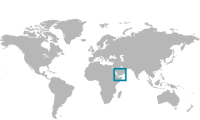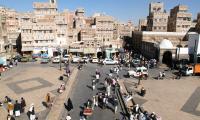Yemen


Following negotiations, Saleh agreed to resign and gained subsequent immunity.
Presidential elections in 2012 were followed by a National Dialogue Conference (NDC) process, which was supposed to define the main aspect of a future unified Yemeni state. Although significantly delayed, the NDC was formally finalised, but the outcomes are yet to be implemented.
This is mainly because of the current instability in Yemen caused by the Houthi rebellion against the sitting president and government. In September 2014, the northern-based Zaidi Shiite Houthi movement took over the Yemeni capital Sana’a, and has since continued to expand it control over different areas of Yemen. Consequently, the government is currently in exile in the Yemeni town of Aden and President Hadi has sought refuge in Saudi Arabia.
Our programme
The Danish Institute for Human Rights started working in Yemen in 2007. Our main objective is to support the national human rights system in becoming capable of promoting and protecting human rights across the country. Despite the obvious challenges related to working in a country where the absence of security prevents a physical presence, the institute continues to work in Yemen. This is done by leveraging and maintaining long-term partnerships with key stakeholders who are still active inside the country. This approach ensures local ownership and sustainability of engagements as well builds the capacity of partners to induce positive human rights change.
Partners
- The Ministry of Human Rights
- The Ministry of Legal Affairs
- The Yemeni Human Rights Network.
In addition, the institute plans to partner with the future National Human Rights Institution as soon as it is established.
Brief facts
Geography: Yemen is a Middle Eastern country neighbouring Saudi Arabia to the North, Oman to the East, and the Gulf of Aden to the South.
Demography: Yemen has approximately 24 million inhabitants with a life expectancy at birth of around 63 years.
Economy: GDP per capita in Yemen is 3,792 USD (PPP) (2013).
Official language: Arabic.
Political: Under the 1991 constitution, Yemen is a multiparty republic with two legislative houses – the Consultative Council (111 appointed members), and the House of Representatives (301 elected members). The President is the head of state, and the Prime Minister is the head of government.
Sources: World Bank, CIA
